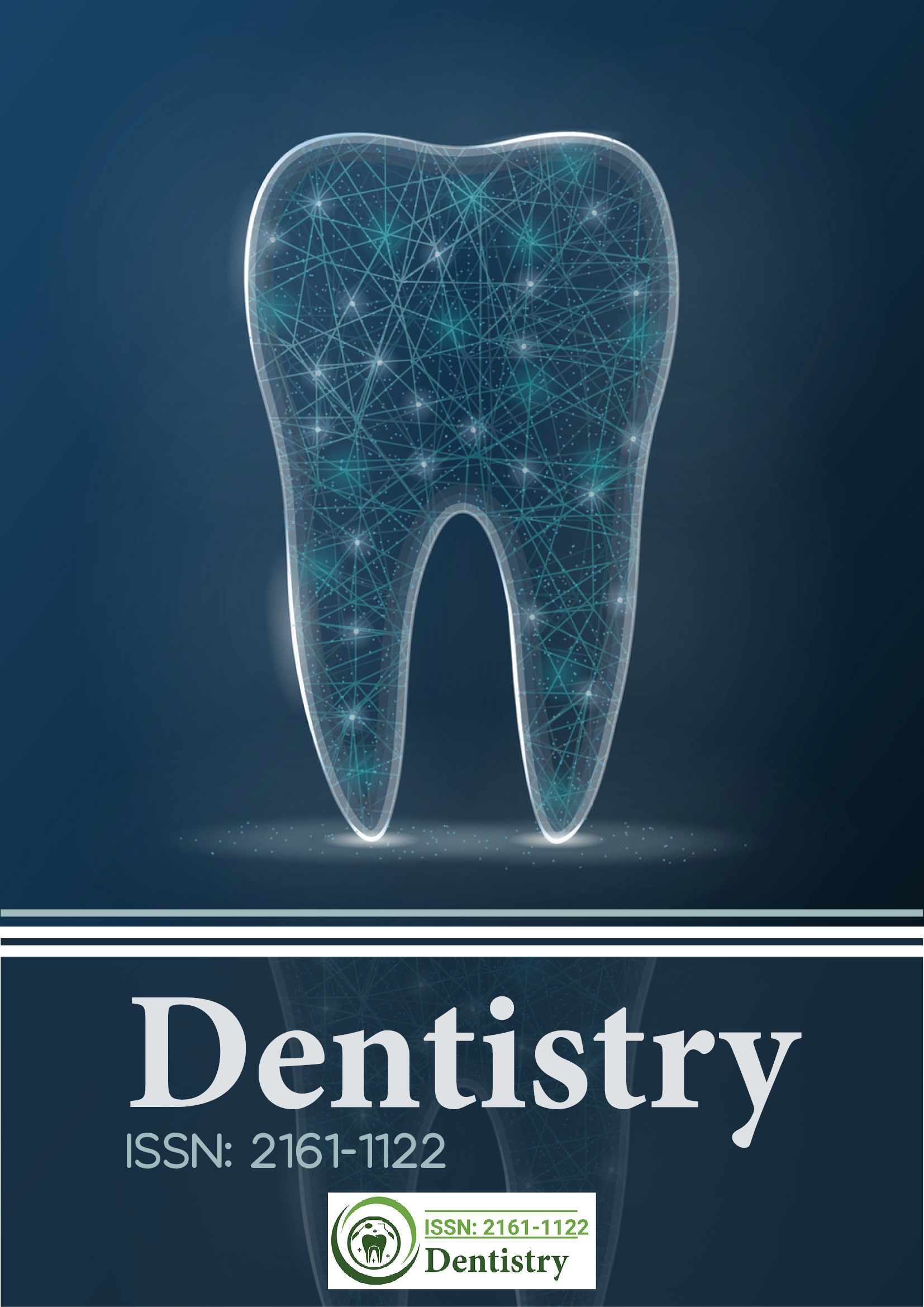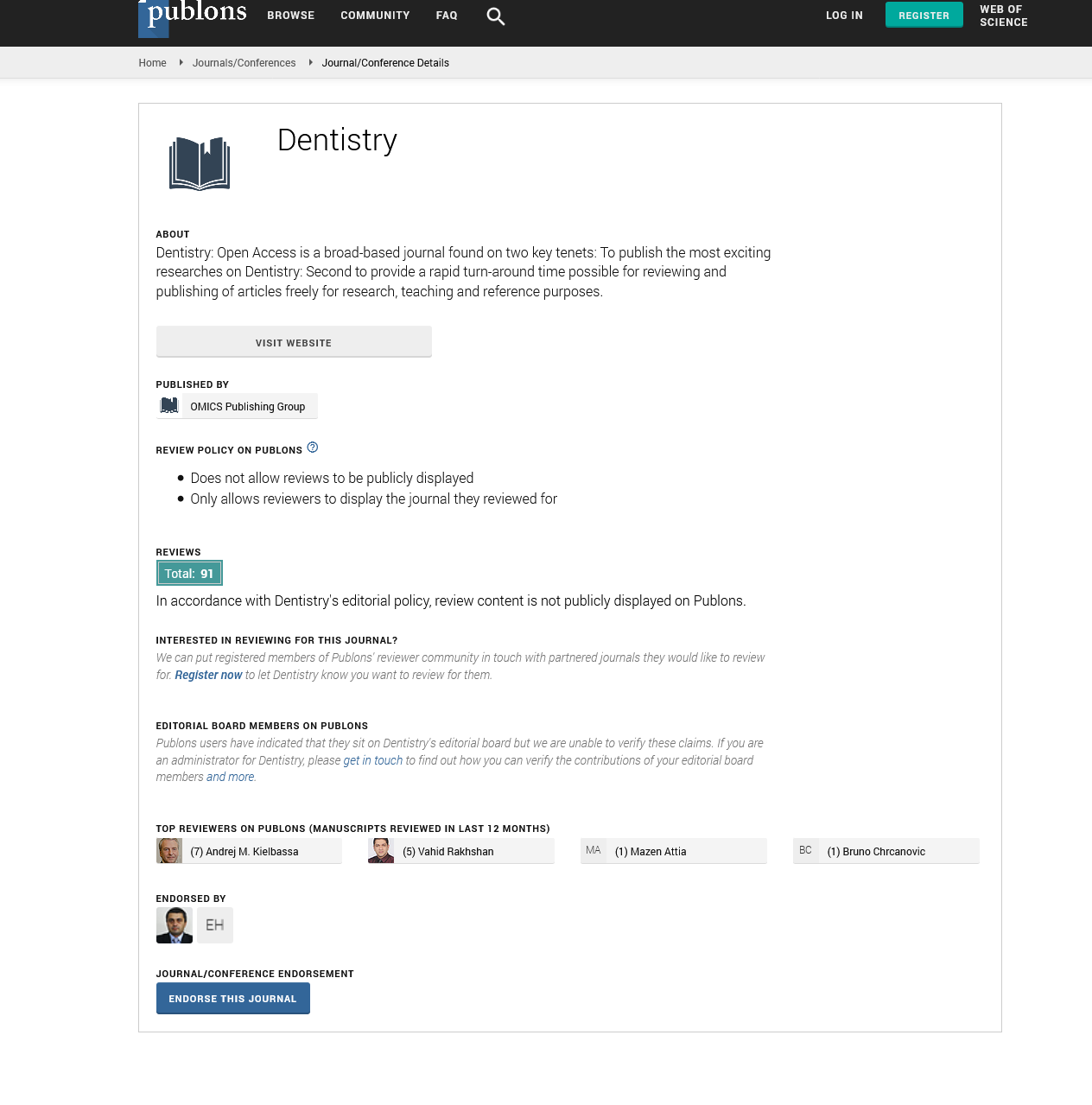Citations : 2345
Dentistry received 2345 citations as per Google Scholar report
Indexed In
- Genamics JournalSeek
- JournalTOCs
- CiteFactor
- Ulrich's Periodicals Directory
- RefSeek
- Hamdard University
- EBSCO A-Z
- Directory of Abstract Indexing for Journals
- OCLC- WorldCat
- Publons
- Geneva Foundation for Medical Education and Research
- Euro Pub
- Google Scholar
Useful Links
Share This Page
Journal Flyer

Open Access Journals
- Agri and Aquaculture
- Biochemistry
- Bioinformatics & Systems Biology
- Business & Management
- Chemistry
- Clinical Sciences
- Engineering
- Food & Nutrition
- General Science
- Genetics & Molecular Biology
- Immunology & Microbiology
- Medical Sciences
- Neuroscience & Psychology
- Nursing & Health Care
- Pharmaceutical Sciences
The effect on irradiance from using infection control barriers on dental light curing units
19th American Dental Congress
December 08-10, 2016 Phoenix, USA
Gregory M Schuster, Brent Peterson, Nicole Putnam and John C Mitchell
Midwestern University, USA
Posters & Accepted Abstracts: Dentistry
Abstract:
Objective: This study investigated the effect of several disposable infection control barriers on the light intensity, or irradiance, from a LED dental light curing unit (LCU). It was hypothesized that there would be a slight reduction in irradiance associated with barriers but that the range of reduction among different barriers would be narrow. Methods: A total of 11 Valo LED LCUâ??s (Ultra dent, South Jordan and UT) were collected from the Midwestern University Dental Clinic. Irradiance was measured using an Ocean Optics Flame spectrometer equipped with Ocean View software. Each LCU was rigidly mounted on an optical bench and a 3.0 neutral density filter was mounted between LCU and the spectrometer bench. Six separate measurements were recorded for each of the eleven LCUâ??s, including a measurement with two different Ultradent Valo LCU sleeves, a measurement with two different Henry Schein Air/Water syringe covers, a measurement using Kirkland Signature Stretch- Tite plastic food wrap, and a control scan without any barrier. Data was collected without ambient light and each LCU was operated on the lowest setting for 20 seconds. Analysis of variance (ANOVA) followed by a post-hoc Fisherâ??s Test was used to look for statistical differences (a=0.05). Results: The reduction in irradiance of each of the barriers was about 10% with the plastic food wrap producing the least amount. Conclusion: Each of the barriers tested demonstrated statistically significant reduction in irradiance of LCUâ??s compared with the control. Although statistically significant, the degree of reduction was deemed to be clinically insignificant.

